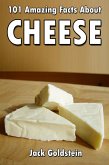Structured into three sections, the book traces banchan's origins in agrarian life, regional variations (seafood-based dishes on coasts versus mountain-foraged greens), and modern adaptations amid urbanization. It draws on rare sources, such as 19th-century household journals detailing medicinal uses of chili paste, and compares Korean pickling to global traditions like Nordic preserves. Unlike typical cookbooks, it blends scholarly rigor with approachable storytelling, offering historical recipe recreations alongside discussions on culinary commodification-like how sikhye transformed from royal digestive aid to mass-produced drink.
What sets this work apart is its interdisciplinary lens, weaving culinary anthropology, gender studies, and environmental history into a cohesive narrative. By focusing on banchan's evolution rather than static traditions, the book invites readers to see these dishes as dynamic expressions of identity. Practical appendices, including adapted royal recipes, bridge past and present, making Hidden Banchan Facts both a historical deep dive and an invitation to savor Korea's culinary philosophy: that even the smallest dishes carry stories worth sharing.
Dieser Download kann aus rechtlichen Gründen nur mit Rechnungsadresse in A, B, BG, CY, CZ, D, DK, EW, E, FIN, F, GR, H, IRL, I, LT, L, LR, M, NL, PL, P, R, S, SLO, SK ausgeliefert werden.









